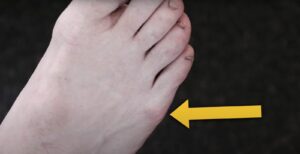Fungal nail infections emerge when various types of fungi gain access to your nails and establish an infection. This condition typically leads to changes in the appearance of the affected nail, ranging from color changes to potential thickening or crumbling of the nail itself. Despite the fact that these infections rarely result in physical discomfort, they do not significantly retard one’s daily activities. However, their stubborn nature can make them a frustrating condition to address.
Key Questions Considered in the Article:
- What are fungal nail infections, and how do they impact individuals?;
- What is Photodynamic Antimicrobial Therapy (PACT), and how does it work in treating fungal nail infections?;
- What are the advantages of PACT compared to other treatments for fungal nail infections?;
- How do oral medications work in treating fungal nail infections, and what are their potential side effects?;
- What are some common over-the-counter options and home remedies for fungal nail infections, and what are their effectiveness and limitations?;
- Why is it important to seek professional assistance when treating fungal nail infections?;
- What environmental factors should be addressed to prevent the recurrence of fungal nail infections?
Photodynamic Antimicrobial Therapy – An Innovation in Fungal Nail Treatment
Photodynamic Antimicrobial Therapy (PACT) is a dynamic, scientifically-backed treatment method for fungal nail infections. PACT is a non-invasive treatment that utilizes a unique interplay of light, oxygen, and a photosensitive agent (PACT gel) to eliminate fungal cells. What’s extraordinary about this therapy is that while it penetrates and destroys the fungal cells, it leaves the surrounding healthy tissues unscathed.
On average, it takes about three sessions to experience significant improvement with PACT. However, the exact number can vary depending on the severity of the fungal nail infection, which can be accurately determined by a healthcare professional.
Currently, PACT is standing strong as one of the most potent fungal nail treatments available, showcasing impressive results among users and professionals alike.
Oral Medications
Oral medications have been a long-standing traditional treatment for fungal nail infections. These medications have shown to yield successful results, but it’s essential to note that they may come with a host of side effects. Some of these may include headaches, dizziness, gastrointestinal discomfort, rashes, and potential liver function complications.
Such medications are typically availed via a GP’s prescription, as they need to analyze your overall health and potential drug interactions before recommending oral antifungal drugs. This treatment method boasts an 85% success rate, but it is usually accompanied by recurring liver function tests every 12 weeks to monitor the liver’s health before, during, and after the treatment course.
Home Remedies and Over-the-Counter Solutions
Over-the-counter topical nail paints such as ciclopirox nail lacquer, amorolfine nail lacquer (Loceryl), and Canesten are commonly used treatments for minor fungal nail infections. To maximize their effectiveness, it is recommended to file down the nail before applying these lacquers. This allows the treatment to penetrate deeper into the nail, attacking the fungus at its source. These treatments can be conveniently found in many local drug stores or pharmacies. However, it is important to note that they offer a relatively low success rate of about 8-10%. Additionally, patience is needed as it can take anywhere from 6 to 24 months to see noticeable improvements.
Since fungal infections can spread, it’s advisable to complement these treatments with regular podiatry appointments, ideally every six weeks. During these sessions, a skilled podiatrist can safely file down the nail using sterile tools to minimize the risk of cross-contamination.
While browsing online, you might encounter numerous unconventional remedies such as daily applications of tea tree oil or vinegar soaks. It’s crucial to understand that these methods lack substantial scientific evidence to validate their effectiveness against fungal nail infections. Hence, we do not advise relying on these unproven treatments.
Key Factors in Fungal Nail Treatment
Treating a fungal nail infection does not guarantee a full recovery but the chances of success significantly increase if it’s addressed in the early stages or when the least number of nails is affected.
Important considerations in treating fungal nail infections include:
- Post-treatment, it can take anywhere from 6 to 12 months for a healthy nail to fully grow in;
- Eliminating environmental factors contributing to fungal nail conditions (such as moisture in shoes) is crucial in preventing recurrence.
If you suspect a fungal nail infection, it’s recommended to book a consultation with a professional podiatrist. This can aid in obtaining an accurate diagnosis and discussing suitable treatment plans.
Conclusion
Treating a fungal nail infection can be a challenging and persistent endeavor, with no single treatment offering a 100% guarantee of complete resolution. However, the success rate is significantly higher when the infection is addressed in its mild or early stages and when it affects the least number of nails. Remember, once the fungal infection has been resolved, it can take 6-12 months for the healthy nail to fully grow out.
To increase the chances of successful treatment and prevent recurrence, it is crucial to address and eliminate any environmental factors that may have contributed to the development of the fungal nail condition, such as excessive moisture in shoes and protruding bone on the outside of the foot.


